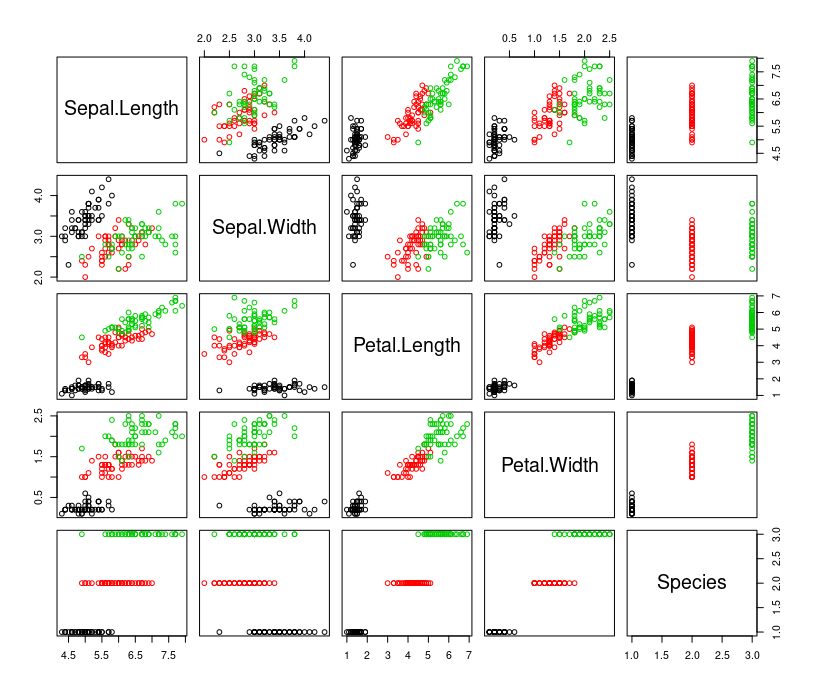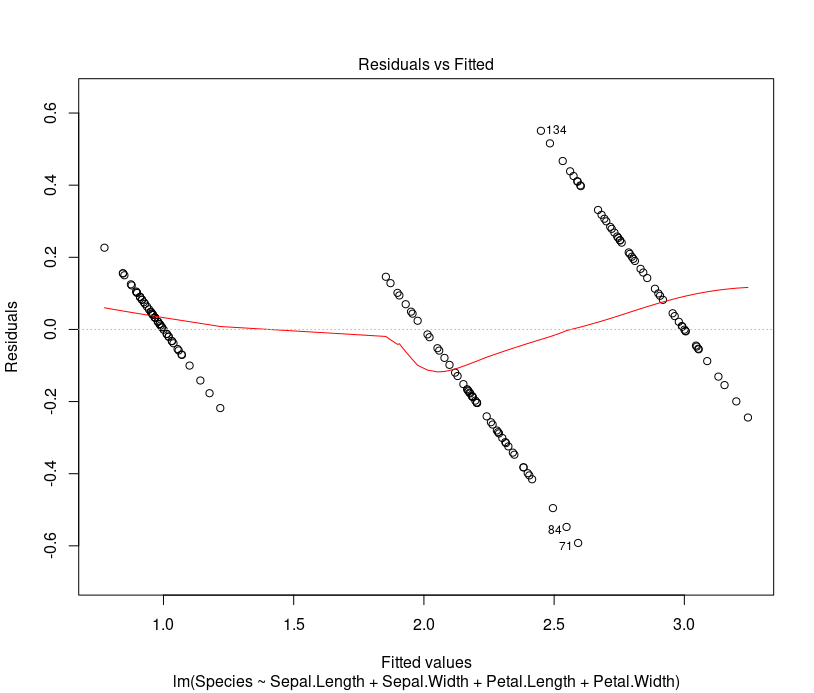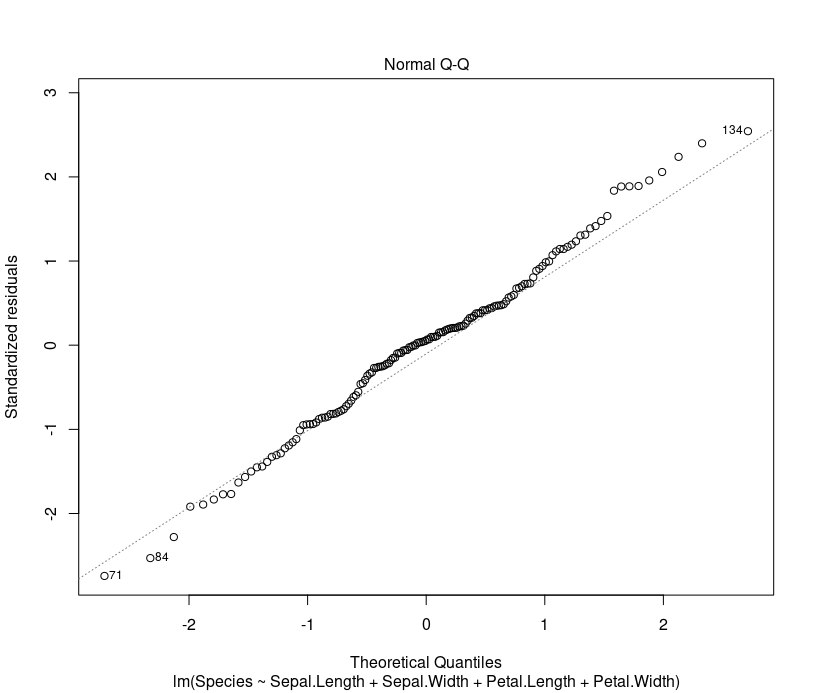Introduction to linear regression and modeling in R Science 06.06.2016
Introduction
In statistics, modeling is where we get down to business. Models quantify the relationships between our variables and one let us make predictions.
The regression analysis focus on building a thought process around how the modeling techniques establish and quantify a relation among response variables and predictors. Regression is to build a function of independent variables (also known as features, attributes, predictors, dimensions) to predict a dependent variable (also called response, output, target).
The concept of causation is important to keep in mind, as most of the time our thought process deviates from how relationships quantified by a model have to be interpreted. For example, a statistical model will be able to quantify relationships between completely irrelevant measures, say electricity generation and beer consumption.
Any regression analysis involves three key sets of variables:
- Dependent or response variables (Y): Input series
- Independent or predictor variables (X): Input series
- Model parameters: Unknown parameters to be estimated by the regression model
Important concept to understand is around parametric and non-parametric methods.
- Parametric methods assume that the sample data is drawn from a known probability distribution based on fixed set of parameters. For instance, linear regression assumes normal distribution, whereas logistic assumes binomial distribution, etc. This assumption allows the methods to be applied to small datasets as well.
- Non-parametric methods do not assume any probability distribution in prior, rather they construct empirical distributions from the underlying data. These methods require high volume of data to model estimation. There exists a separate branch on non-parametric regressions, e.g., kernel regression, Nonparametric Multiplicative Regression (NPMR) etc.
A simple linear regression is the most basic model. The linear regression model is used for explaining the relationship between a single dependent variable known as Y and one or more X's independent variables known as input, predictor, or independent variables. So, it’s just two variables and is modeled as a linear relationship with an error term
We are given the data for x and y. Our mission is to fit the model, which will give us
the best estimates for and
.
In other words, simple linear regression fits a straight line through the set of n points in such a way that makes the sum of squared residuals of the model (that is, vertical distances between the points of the data set and the fitted line) as small as possible.
That generalizes naturally to multiple linear regression, where we have multiple variables on the righthand side of the relationship
Statisticians call u, v, and w the predictors and y the response. Obviously, the model is useful only if there is a fairly linear relationship between the predictors and the response, but that requirement is much less restrictive than you might think.
The beauty of R is that anyone can build these linear models. The models are built by a function, lm , which returns a model object. From the model object, we get the coefficients () and regression statistics.
Regression creates a model, and ANOVA (Analysis of variance) is one method of evaluating such models. ANOVA is actually a family of techniques that are connected by a common mathematical analysis.
- One-way ANOVA. This is the simplest application of ANOVA. Suppose you have data samples from several populations and are wondering whether the populations have different means. One-way ANOVA answers that question. If the populations have normal distributions, use the
oneway.testfunction, otherwise, use the nonparametric version, thekruskal.testfunction. - Model comparison. When you add or delete a predictor variable from a linear regression, you want to know whether that change did or did not improve the model. The
anovafunction compares two regression models and reports whether they are significantly different. - ANOVA table. The anova function can also construct the ANOVA table of a linear regression model, which includes the F statistic needed to gauge the model’s statistical significance.
Essentially, the linear regression model will help you with:
- Prediction or forecasting
- Quantifying the relationship among variables
Simple linear regression
Imagine, you have two vectors, x and y, that hold paired observations: . You believe there is a linear relationship between x and y, and you want to create a regression model of the relationship.
The regression uses the ordinary least-squares (OLS) algorithm to fit the linear model
where and
are the regression coefficients and the
are the error terms.
The lm function can perform linear regression. The main argument is a model formula, such as y ~ x. The formula has the response variable on the left of the tilde character ( ~ ) and the predictor variable on the right. The function estimates the regression coefficients, and
, and reports them as the intercept and the coefficient of x, respectively
lm(iris$Sepal.Length ~ iris$Sepal.Width)
In this case, the regression equation
iris$Sepal.Length = 6.5262 - 0.2234 iris$Sepal.Width
Multiple linear regression
Suppose you have several predictor variables (e.g., u, v, and w) and a response variable y. You believe there is a linear relationship between the predictors and the response, and you want to perform a linear regression on the data.
Multiple linear regression is the obvious generalization of simple linear regression. It allows multiple predictor variables instead of one predictor variable and still uses OLS to compute the coefficients of a linear equation. The three-variable regression just given corresponds to this linear model:
R uses the lm function for both simple and multiple linear regression. You simply add
more variables to the righthand side of the model formula. The output then shows the
coefficients of the fitted model:
lm(y ~ u + v + w)
Let's look at strengths and weaknesses of multiple linear regression.
Strength of multiple linear regression:
- By far the most common approach for modeling numeric data
- Can be adapted to model almost any modeling task
- Provides estimates of both the strength and size of the relationships among features and the outcome
Weaknesses of multiple linear regression:
- Makes strong assumptions about the data
- The model's form must be specified by the user in advance
- Does not handle missing data
- Only works with numeric features, so categorical data requires extra processing
- Requires some knowledge of statistics to understand the model
Getting regression statistics
Before interpreting and using your model, you will need to determine whether it is a good fit to the data and includes a good combination of explanatory variables. You may also be considering several alternative models for your data and want to compare them.
The fit of a model is commonly measured in a few different ways. These include:
- Coefficient of determination (
) gives an indication of how well the model is likely to predict future observations. It measures the portion of the total variation in the data that the model is able to explain. It takes values between 0 and 1. A value close to 1 suggests that the model will give good predictions, while a value close to 0 suggests that the model will make poor predictions.
- Significance test for model coefficients tells you whether individual coefficient estimates are significantly different from 0, and hence whether the coefficients are contributing to the model. Consider removing coefficients with p-values greater than 0.05.
- F-test tells you whether the model is significantly better at predicting compared with using the overall mean value as a prediction. For good models, the p-value will be less than 0.05. An F-test can also be used to compare two models. In this case, a p-value less than 0.05 tells you that the more complex model is significantly better than the simpler model.
- Confidence intervals for the coefficients.
- Residuals are the set of differences between the observed values of the response variable, and the values predicted by the model (the fitted values). Standardized residuals and studentized residuals are types of residuals that have been adjusted to have a variance of one.
- The ANOVA table.
Save the regression model in a variable, say m
m = lm(y ~ u + v + w)
Then use functions to extract regression statistics and information from the model
anova(m)ANOVA tablecoefficients(m)Model coefficientscoef(m)Same as coefficients(m)confint(m)Confidence intervals for the regression coefficientsdeviance(m)Residual sum of squareseffects(m)Vector of orthogonal effectsfitted(m)Vector of fitted y valuesresiduals(m)Model residualsresid(m)Same as residuals(m)summary(m)Key statistics, such as, the F statistic, and the residual standard error (
). You can read good description of
summaryin book "R Cookbook" by Paul Teetor (page 270).vcov(m)Variance–covariance matrix of the main parameters
Plotting regression residuals
Residuals are core to the diagnostic of regression models. Normality of residual is an important condition for the model to be a valid linear regression model. In simple words, normality implies that the errors/residuals are random noise and our model has captured all the signals in data.
The linear regression model gives us the conditional expectation of function Y for given values of X. However, the fitted equation has some residual to it. We need the expectation of residual to be normally distributed with a mean of 0 or reducible to 0. A normal residual means that the model inference (confidence interval, model predictors’ significance) is valid.
If you want a visual display of your regression residuals: you can plot the model object by selecting the residuals plot from the available plots
m = lm(y ~ x) plot(m, which=1) abline(coef(m))
Normally, plotting a regression model object produces several diagnostic plots. You can select just the residuals plot by specifying which=1.
Predicting new values
If you want to predict new values from your regression model then you can use predict function. Save the predictor data in a data frame. Use the predict function, setting the newdata parameter to the data frame:
m = lm(y ~ u + v + w) preds = data.frame(u=3.1, v=4.0, w=5.5) predict(m, newdata=preds)
Once you have a linear model, making predictions is quite easy because the predict function does all the heavy lifting. The only annoyance is arranging for a data frame to contain your data.
The predict function returns a vector of predicted values with one prediction for every
row in the data. The example contains one row, so predict returns one value
preds = data.frame(u=3.1, v=4.0, w=5.5) predict(m, newdata=preds) 12.31374
Example
Let's build multiple regression for Iris data set. Prepare data
irisn = iris irisn[,5] = unclass(iris$Species)
Plot data for multivariate data
plot(irisn, col=irisn$Species)

Build Linear Model for Iris dataset
ml = lm(Species~Sepal.Length+Sepal.Width+Petal.Length+Petal.Width, data=irisn)
Coefficients
coef(ml)
Differences between observed values and fitted values
residuals(ml)[1:10]
To check for homoscedasticity plot following chart. Residual vs predicted value scatter plot should not look like a funnel.
plot(ml, which=1)

To check if the residuals are approximately normally distributed plot following chart. Q-Q plot should be close to the straight line.
plot(ml, which=2)

To predict Species based on Linear Model using new values for Sepal.Length, Sepal.Width, Petal.Length, Petal.Width
new_data = data.frame(Sepal.Length=5.7, Sepal.Width=3.1, Petal.Length=5.0, Petal.Width=1.7) predict(ml, new_data)
Calculate the root-mean-square error (RMSE), less is better
RMSE = function(predicted, true) mean((predicted - true)^2)^.5 RMSE(predict(ml, new_data), irisn$Species)
Types of regression
There are different types of regression:
- Linear regression. This is the oldest type and most widely known type of regression. In this the dependent variable is continuous and the independent variable can be discrete or continuous and the regression line is linear. Linear regression is very sensitive to outliers and cross-correlations.
- Logistic regression. This is used when the dependent variable is binary in nature (0 or 1, success or failure, survived or died, yes or no, true or false). It is widely used in clinical trials, fraud detection, and so on. It does not require there to be a linear relationship between dependent and independent variables.
- Polynomial regression. This implies of polynomial equation here the power of the independent variable is more than one. In this case the regression line is not a straight line, but a curved line.
- Ridge regression. This is a more robust version of linear regression and is used when data variables are highly correlated. Using some constraints on regression coefficients, it is made some more natural, closer to real estimates.
- Lasso regression. This is like ridge regression by penalizing the absolute size of regression coefficients. It also automatically performs the variable reduction.
- Ecologic regression. This is used when data is divided in different group or strata, performing regression per group or strata. One should be cautious when using this kind of regression as best regression may get over shadowed by noisy ones.
- Logic regression. This is same as Logistic regression, but it is used in scoring algorithms where all variables are of binary nature.
- Bayesian regression. This uses Bayesian interface of conditional probability. It uses the same approach as ridge regression, which involved penalizing estimator, making it more flexible and stable. It assumes some prior knowledge about regression coefficient and error terms and the error information is loaded with approximated probability distribution.
- Quantile regression. This is used when the area of interest is to study extreme limits, for example pollution level to study interest in death due to pollution. In this conditional quantile function of independent variable is used. It tries to estimate the value with conditional quantiles.
- Jackknife regression. This uses a resampling algorithm to remove the bias and variance.
Quote
Categories
- Android
- AngularJS
- Databases
- Development
- Django
- iOS
- Java
- JavaScript
- LaTex
- Linux
- Meteor JS
- Python
- Science
Archive ↓
- September 2024
- December 2023
- November 2023
- October 2023
- March 2022
- February 2022
- January 2022
- July 2021
- June 2021
- May 2021
- April 2021
- August 2020
- July 2020
- May 2020
- April 2020
- March 2020
- February 2020
- January 2020
- December 2019
- November 2019
- October 2019
- September 2019
- August 2019
- July 2019
- February 2019
- January 2019
- December 2018
- November 2018
- August 2018
- July 2018
- June 2018
- May 2018
- April 2018
- March 2018
- February 2018
- January 2018
- December 2017
- November 2017
- October 2017
- September 2017
- August 2017
- July 2017
- June 2017
- May 2017
- April 2017
- March 2017
- February 2017
- January 2017
- December 2016
- November 2016
- October 2016
- September 2016
- August 2016
- July 2016
- June 2016
- May 2016
- April 2016
- March 2016
- February 2016
- January 2016
- December 2015
- November 2015
- October 2015
- September 2015
- August 2015
- July 2015
- June 2015
- February 2015
- January 2015
- December 2014
- November 2014
- October 2014
- September 2014
- August 2014
- July 2014
- June 2014
- May 2014
- April 2014
- March 2014
- February 2014
- January 2014
- December 2013
- November 2013
- October 2013